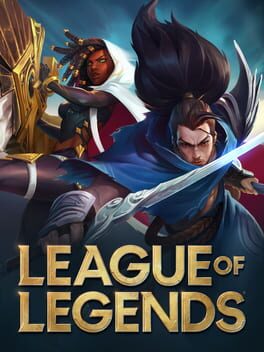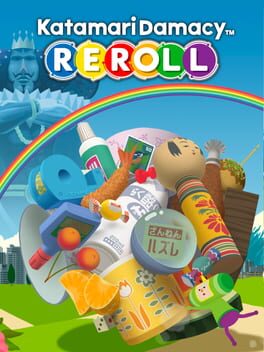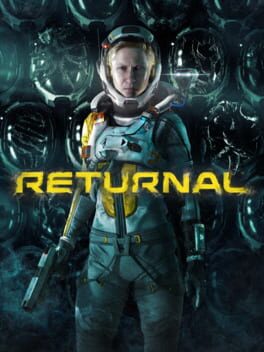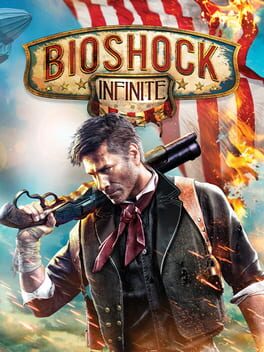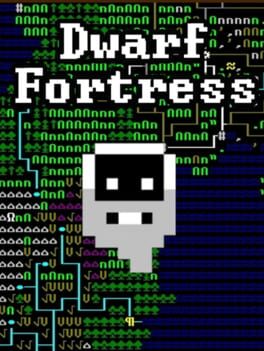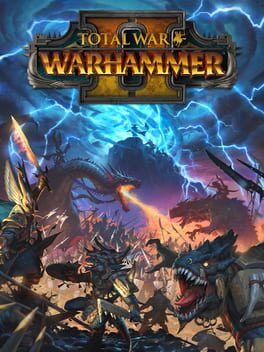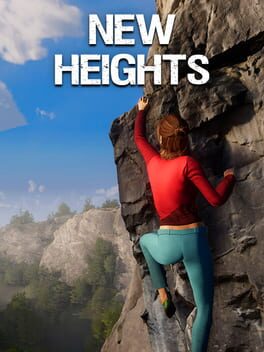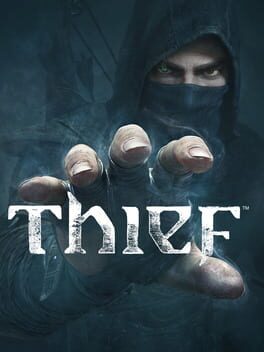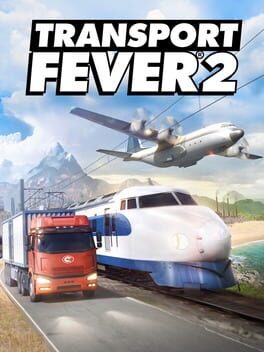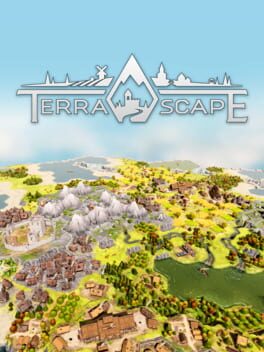jobosno
BACKER
2009
I think this'll be my third and final attempt to review League in a way that I find satisfactory.
It always strikes me as a little silly to rate esports-first games poorly because they have the capacity to make you or others mad - getting people invested in competition will always have this result at some point or another, and asserting that the toxicity present in League is exceptional in some way is strange when you can see similar behaviors playing with anonymous strangers in Mario Party or online Monopoly or what-have-you.
On the other hand, League is tailor-made for misunderstandings. Its tutorial teaches you how to cast abilities, but nothing about macro or micro goals other than last-hitting minions to earn gold, and there are SO many systems and strategies here you can use to develop/mitigate advantages that each player can develop their own playstyle that is completely incompatible with their teammates. As frustrating as it is, it's still League's biggest draw for me.
With 160+ champions, a similar number of items, and freely changeable runes to further customize your playstyle, there is likely some way for League to cater to any gameplay fantasy you like as long as it involves small-scale combat. I have seen players completely defy conventional wisdom, instead using their champion's unique strengths to invent an entirely new way to play the game. It takes a lot of time and learning to get to this point, but if you're wondering why someone would put thousands of hours into the game, acknowledge how mad it can make them, and keep coming back, this is the answer - it can be deeply rewarding to find your way to play this game, to find that champion that fits you like an old baseball glove, to find a new broken strategy that nobody is using, to find the worst/least popular champions in the game and make them viable by completely changing how the game is played. If it's stupid and it works, it ain't stupid. League does an excellent job of demonstrating the extreme strengths and extreme weaknesses afforded by PvP - you can abuse their aggression, their boredom, their lack of matchup knowledge, their inattention to the minimap, etc. Even toxicity can be turned to your advantage - it is entirely possible to win games by goading your opponent into making bad plays that they can't escape from.
Can I recommend it? No - I've got my fair share of complaints about the way Riot handles this game and their company, but even ignoring that, I shouldn't really encourage anyone to play this. It strikes me as near irresponsible to recommend something that requires this kind of time investment, knowing that those who have stopped playing it talk about it more like a drug addiction than a dropped hobby. So I'm writing this review less as an endorsement and more as an explanation of League's allure at its highest points, what keeps people coming back beyond simply "sunk costs" - to explain what piques my interest as someone who doesn't pay attention to esports or "the meta" or what-have-you.
It always strikes me as a little silly to rate esports-first games poorly because they have the capacity to make you or others mad - getting people invested in competition will always have this result at some point or another, and asserting that the toxicity present in League is exceptional in some way is strange when you can see similar behaviors playing with anonymous strangers in Mario Party or online Monopoly or what-have-you.
On the other hand, League is tailor-made for misunderstandings. Its tutorial teaches you how to cast abilities, but nothing about macro or micro goals other than last-hitting minions to earn gold, and there are SO many systems and strategies here you can use to develop/mitigate advantages that each player can develop their own playstyle that is completely incompatible with their teammates. As frustrating as it is, it's still League's biggest draw for me.
With 160+ champions, a similar number of items, and freely changeable runes to further customize your playstyle, there is likely some way for League to cater to any gameplay fantasy you like as long as it involves small-scale combat. I have seen players completely defy conventional wisdom, instead using their champion's unique strengths to invent an entirely new way to play the game. It takes a lot of time and learning to get to this point, but if you're wondering why someone would put thousands of hours into the game, acknowledge how mad it can make them, and keep coming back, this is the answer - it can be deeply rewarding to find your way to play this game, to find that champion that fits you like an old baseball glove, to find a new broken strategy that nobody is using, to find the worst/least popular champions in the game and make them viable by completely changing how the game is played. If it's stupid and it works, it ain't stupid. League does an excellent job of demonstrating the extreme strengths and extreme weaknesses afforded by PvP - you can abuse their aggression, their boredom, their lack of matchup knowledge, their inattention to the minimap, etc. Even toxicity can be turned to your advantage - it is entirely possible to win games by goading your opponent into making bad plays that they can't escape from.
Can I recommend it? No - I've got my fair share of complaints about the way Riot handles this game and their company, but even ignoring that, I shouldn't really encourage anyone to play this. It strikes me as near irresponsible to recommend something that requires this kind of time investment, knowing that those who have stopped playing it talk about it more like a drug addiction than a dropped hobby. So I'm writing this review less as an endorsement and more as an explanation of League's allure at its highest points, what keeps people coming back beyond simply "sunk costs" - to explain what piques my interest as someone who doesn't pay attention to esports or "the meta" or what-have-you.
I see people use words like "childlike joy" a lot, but I don't remember the last time I've seen a game so suited to it before playing the remake of 2004's Katamari Damacy. Katamari Damacy asks that you maneuver an increasingly large ball around a level where smaller objects adhere to the ball - the katamari - until you have enough volume to roll up new objects. It is perfectly tactile: in primarily using the analog sticks, you are not the ball - you are the diminutive prince, forced to settle for merely corralling the momentum of a katamari that is often twice your size before you've picked up even a single object.
It's not a frictionless experience, but Katamari Damacy's developers are judicious in how, when, and how much they attempt to toy with the player. For the most part, they're rooting for you: objects are generally placed with those of a comparable size, allowing you to build up some steam before hitting a conspicuous, illogical wall of bicycles or traffic cones or what-have-you that blocks the path ahead - a gentle, guiding, parent-like hand that asks you to spend a little longer working with what you've already got before picking up some new toys. And boy howdy will you pick up some new toys.
Start with thumbtacks, then move to erasers, then pick up a toothbrush that nearly prevents your katamari from rolling in certain directions. In the span of minutes, cars become as useless as thumbtacks as you pluck buildings from the ground, islands from the ocean, and clean the sky of its clouds. You have completed your goal of making something as big as you possibly can during your time at recess, and how do you feel as you roll around the empty ocean? Satisfied? Bored? Hungry for more? Do you feel a tinge of regret at having undone it all? That last one is me speaking from my own experience, but Katamari Damacy itself does not judge you - it'll make a magnificent star, after all.
It's not a frictionless experience, but Katamari Damacy's developers are judicious in how, when, and how much they attempt to toy with the player. For the most part, they're rooting for you: objects are generally placed with those of a comparable size, allowing you to build up some steam before hitting a conspicuous, illogical wall of bicycles or traffic cones or what-have-you that blocks the path ahead - a gentle, guiding, parent-like hand that asks you to spend a little longer working with what you've already got before picking up some new toys. And boy howdy will you pick up some new toys.
Start with thumbtacks, then move to erasers, then pick up a toothbrush that nearly prevents your katamari from rolling in certain directions. In the span of minutes, cars become as useless as thumbtacks as you pluck buildings from the ground, islands from the ocean, and clean the sky of its clouds. You have completed your goal of making something as big as you possibly can during your time at recess, and how do you feel as you roll around the empty ocean? Satisfied? Bored? Hungry for more? Do you feel a tinge of regret at having undone it all? That last one is me speaking from my own experience, but Katamari Damacy itself does not judge you - it'll make a magnificent star, after all.
2021
I know this just now got its release on an accessible platform, but I'm a little surprised that I've been hearing about a different plot-heavy action roguelite steeped in Greek mythology for years now.
Returnal uses every element of its design to work towards its central theme. The plot is constantly introducing you to something else that doesn't fully make sense right as you've come to understand the last clue. Knowledge of Greek mythology will help a player quite a lot and let you skip ahead a bit in making sense of what's going on, but even then I found my own theories about the plot to be ever-shifting, and I'm sure if I went back to complete more of the Tower I'd find them changing yet again. I won't say much else because I think continually going "oh my god" (good realization) and "oh my god" (terrifying realization) is a key part of the experience, and I'd like to preserve that as much as possible for anyone who hasn't yet played it.
What I will say is that the game (story-wise) is deliberately unpleasant, making this possibly the first roguelite plot I've seen where your inevitable failure does not feel like something the developers have to hand-wave away to keep things moving. Your goals are vague - much of the game is spent with the objective of reaching something that Selene is fixated on. Instead of a surmountable, heroic challenge, the whole thing feels eerie and unnerving - a desperate, irrational struggle through the tendrils towards a distant, beckoning something that holds little chance of being friendly. The tentacles and tendrils and all the other ways that the forest grasps at you, the way the same forest has... a run-down house resembling nothing else on the planet? The way the ambient soundtrack sounds wispy and ethereal and flowing and aquatic, interrupted by unnatural stutters and surges of sound that lends the entire environment a feeling of vastness that simultaneously has too much and frighteningly little going on.
And it's because it all works so well together that the most video game-like parts of it begin to stick out. To be clear, this is a nitpick: I was tempted to start this off by saying that the fights are "too good". The further I progress, the more I'm thinking about the story, and the harder I can feel my thoughts being violently yanked off-course by seeing a gun on the ground and having to decide if it's better for the challenge ahead than the one I'm using. It's a nitpick because these encounters are still fun, the items still suit the game thematically - the only pure upgrades you get in Returnal are traversal tools - but after each fight I find myself thinking about consumables, one of the very few elements present that feel like they don't belong. To be honest with you, it's probably necessary if you want players to continue through multiple deaths, because combat in Returnal has been pretty aggressively trimmed down to a (very strong) set of action game fundamentals. Removing the most game-y elements would arguably suit the mood a little better, but those same bits that I'm griping about are the only parts that allow you some room for mistakes.
It is the best attempt at working a story into a roguelike I've seen yet, and if you ask me it's worth picking up based on that fact alone. Selene is a character with genuine depth, and the game is fully committed to exploring that depth.
Returnal uses every element of its design to work towards its central theme. The plot is constantly introducing you to something else that doesn't fully make sense right as you've come to understand the last clue. Knowledge of Greek mythology will help a player quite a lot and let you skip ahead a bit in making sense of what's going on, but even then I found my own theories about the plot to be ever-shifting, and I'm sure if I went back to complete more of the Tower I'd find them changing yet again. I won't say much else because I think continually going "oh my god" (good realization) and "oh my god" (terrifying realization) is a key part of the experience, and I'd like to preserve that as much as possible for anyone who hasn't yet played it.
What I will say is that the game (story-wise) is deliberately unpleasant, making this possibly the first roguelite plot I've seen where your inevitable failure does not feel like something the developers have to hand-wave away to keep things moving. Your goals are vague - much of the game is spent with the objective of reaching something that Selene is fixated on. Instead of a surmountable, heroic challenge, the whole thing feels eerie and unnerving - a desperate, irrational struggle through the tendrils towards a distant, beckoning something that holds little chance of being friendly. The tentacles and tendrils and all the other ways that the forest grasps at you, the way the same forest has... a run-down house resembling nothing else on the planet? The way the ambient soundtrack sounds wispy and ethereal and flowing and aquatic, interrupted by unnatural stutters and surges of sound that lends the entire environment a feeling of vastness that simultaneously has too much and frighteningly little going on.
And it's because it all works so well together that the most video game-like parts of it begin to stick out. To be clear, this is a nitpick: I was tempted to start this off by saying that the fights are "too good". The further I progress, the more I'm thinking about the story, and the harder I can feel my thoughts being violently yanked off-course by seeing a gun on the ground and having to decide if it's better for the challenge ahead than the one I'm using. It's a nitpick because these encounters are still fun, the items still suit the game thematically - the only pure upgrades you get in Returnal are traversal tools - but after each fight I find myself thinking about consumables, one of the very few elements present that feel like they don't belong. To be honest with you, it's probably necessary if you want players to continue through multiple deaths, because combat in Returnal has been pretty aggressively trimmed down to a (very strong) set of action game fundamentals. Removing the most game-y elements would arguably suit the mood a little better, but those same bits that I'm griping about are the only parts that allow you some room for mistakes.
It is the best attempt at working a story into a roguelike I've seen yet, and if you ask me it's worth picking up based on that fact alone. Selene is a character with genuine depth, and the game is fully committed to exploring that depth.
2013
E: I don't really like the tone of this review anymore (and disagree with some of the points) although I stand by the score!
I'm trying to find a way to say this without sounding mean-spirited. This is the perfect game for people who want to feel like they played something deep, but don't want to spend much time actively thinking about it. I don't believe that there's a "wrong" way to enjoy games, so I don't really take issue with this playstyle, but I'm a little jealous that I am completely unable to enjoy this game as much as I did when I was 16.
It doesn't want to take its characters seriously. The city itself feels like a Bioshock AU theme park, primarily because it's set dressing for your murder spree and seemingly no thought went into creating a place that exists after you leave. The game constantly feels like it's gearing up to say something serious this time before sheepishly backing away from any point worth making. It pits their in-game left and right against each other and goes "both sides bad" without really bothering to examine context or anything beyond "ooo did you see this time, how they were mean?" I'm pretty transparently leftist when it comes up, but I would still respect the game more if it took a disagreeable stance with conviction as opposed to vaguely alluding to political concepts. I can't even turn my brain off because the action-heavy sequences feel awful to play.
I'm trying to find a way to say this without sounding mean-spirited. This is the perfect game for people who want to feel like they played something deep, but don't want to spend much time actively thinking about it. I don't believe that there's a "wrong" way to enjoy games, so I don't really take issue with this playstyle, but I'm a little jealous that I am completely unable to enjoy this game as much as I did when I was 16.
It doesn't want to take its characters seriously. The city itself feels like a Bioshock AU theme park, primarily because it's set dressing for your murder spree and seemingly no thought went into creating a place that exists after you leave. The game constantly feels like it's gearing up to say something serious this time before sheepishly backing away from any point worth making. It pits their in-game left and right against each other and goes "both sides bad" without really bothering to examine context or anything beyond "ooo did you see this time, how they were mean?" I'm pretty transparently leftist when it comes up, but I would still respect the game more if it took a disagreeable stance with conviction as opposed to vaguely alluding to political concepts. I can't even turn my brain off because the action-heavy sequences feel awful to play.
2006
(Steam Release)
Frankly, I'm a bit of a pessimist, and when I heard DF was making big pushes to be more "accessible" for its Steam release, I assumed we'd be looking at a developer-approved official tileset and... that'd be about it. I heard about the mouse controls but was not particularly hopeful that they would be more useful or clear than the keyboard shortcuts that already existed. I'll admit I was wrong! You'd be forgiven for not realizing that the game under the hood was originally designed as an ASCII-only project where gameplay more closely resembles "inputting missile launch codes" than swirling analog sticks. The official tileset and mouse controls alone are worth full price for anyone who, like me, has been fascinated by DF but been unwilling to spend the time learning how to gather all the info I need.
The game is still relatively hard to parse, but if you've played one of DF's many spiritual successors (or games inspired by those, in turn) then this shouldn't be too tough a task for you. Especially given the tutorial, which is actually quite good at explaining what's going on and how not to fail instantly - probably the biggest hurdle to learning DF before this point. It's still the same game, it still has its legendary level of detail and its quirky gameplay mechanics - if you're not used to games where fluids and creatures can travel diagonally, you better learn - and it's still possible to lose it all to the zaniest bullshit on the planet.
I think it's finally helped me see the appeal of DF firsthand - I'd dabbled with the game over the years but never enough to fully grasp what I was doing, so my forts were small and rapidly became failures, never interesting enough to have me doing a deep-dive on the wiki for optimized bedroom designs. It's easy to hear about things like cats dying due to an error in calculating feline Blood Alcohol Content and become intimidated, but Bay12 have been smart in where/how the level of detail gets increased. Most of it's in the worldbuilding or systems that run in the background, meaning that savvy or passionate players can opt into interacting with these elements without it being required of new players. All this info turns the fortress itself into a character - a canvas marked by each being that passes through it. Losing in every bizarre way possible is its own fun, of course, but there's still something to gain from watching your dwarves build a legacy and a culture all their own.
Frankly, I'm a bit of a pessimist, and when I heard DF was making big pushes to be more "accessible" for its Steam release, I assumed we'd be looking at a developer-approved official tileset and... that'd be about it. I heard about the mouse controls but was not particularly hopeful that they would be more useful or clear than the keyboard shortcuts that already existed. I'll admit I was wrong! You'd be forgiven for not realizing that the game under the hood was originally designed as an ASCII-only project where gameplay more closely resembles "inputting missile launch codes" than swirling analog sticks. The official tileset and mouse controls alone are worth full price for anyone who, like me, has been fascinated by DF but been unwilling to spend the time learning how to gather all the info I need.
The game is still relatively hard to parse, but if you've played one of DF's many spiritual successors (or games inspired by those, in turn) then this shouldn't be too tough a task for you. Especially given the tutorial, which is actually quite good at explaining what's going on and how not to fail instantly - probably the biggest hurdle to learning DF before this point. It's still the same game, it still has its legendary level of detail and its quirky gameplay mechanics - if you're not used to games where fluids and creatures can travel diagonally, you better learn - and it's still possible to lose it all to the zaniest bullshit on the planet.
I think it's finally helped me see the appeal of DF firsthand - I'd dabbled with the game over the years but never enough to fully grasp what I was doing, so my forts were small and rapidly became failures, never interesting enough to have me doing a deep-dive on the wiki for optimized bedroom designs. It's easy to hear about things like cats dying due to an error in calculating feline Blood Alcohol Content and become intimidated, but Bay12 have been smart in where/how the level of detail gets increased. Most of it's in the worldbuilding or systems that run in the background, meaning that savvy or passionate players can opt into interacting with these elements without it being required of new players. All this info turns the fortress itself into a character - a canvas marked by each being that passes through it. Losing in every bizarre way possible is its own fun, of course, but there's still something to gain from watching your dwarves build a legacy and a culture all their own.
Total War - the series - often struggles with faction variety. Historical fidelity mostly asks that people from the same area and time period fight each other with similar technologies and concepts of warfare, and spicing things up for gameplay purposes often means dipping into the ahistorical, poorly documented, or theoretical. Look at any of the games about WW2-era tanks, boats, or planes and you'll often find that these games create a sense of progression by extending the timeline decades in either direction. Total War isn't immune to this - Creative Assembly will take any excuse to give a faction some kind of ninja unit - but a complaint I've commonly heard from newcomers to the series is that factions feel same-y, with each game creating 1-3 faction archetypes and letting those define the gameplay. Small nuances that determine how each faction should play are either completely invisible to a new player or difficult to intuitively balance. The player asks how much they should lean into their faction's gimmick in order to strike that balance, and the Warhammer games answer confidently: Crank that shit to 11.
If you're playing the Mesoamerican dinosaur faction, it's a pretty safe bet to invest in melee. The King Arthur faction whose population is divided into an illustrious knight class and mobs of untrained peasants probably wants you to play around the horse guys. The gameplay hook for each faction should be obvious from their theming without even glancing at the stats, and Creative Assembly have done a fantastic job of making them just as distinct on the broader campaign map. As a result, factions can feel unique from one another even within the same "race", and the asymmetry forces you to constantly make new, interesting decisions as you try to mitigate your opponent's strengths while playing to your own.
What's more, CA have gone absolutely nuts in bringing the fantasy elements of Warhammer Fantasy into the game. Every friend of mine who's played this game for more than a battle or two has at least one unit that they can gush about for non-gameplay reasons. For me, I'm a Pirates of Sartosa guy, so it's the Necrofex Colossus - a sort of giant, bipedal undead mech made out of the rotten timber of sunken ships and the flesh of their crews, acting as "artillery" by walking right up and blasting you with a cannon at point-blank range. The animations are wonderfully expressive, selling the gameplay fantasy and character of each and every unit regardless of your familiarity with the setting: The rats are a loose, jittery swarm of units while the rigid, rickety ground troops of the Tomb Kings stand in contrast to the inhuman, predatory swiftness of the creatures they employ. It's the feeling of playing with all your action figures at once - GI Joe vs. a bunch of Lego figures vs. a Stormtrooper - with all the vivid effects your childhood brain could imagine and all the strategy you'd need to keep you engaged as an adult.
Best of all, TWW2's co-op campaign is an actual blast. The diversity of the factions combined with the number of leaders in each faction means that both players can pursue the exact flavor of strategy gameplay that they like. If you can at least tolerate the battles, TWW2 lets the owner of an army assign individual units to each player. Divide them up equally, or control the entire army while your friend plays Dynasty Warriors with your general. There's a lot of room for co-op shenanigans with this feature alone, and it's my favorite co-op strategy game as a result.
There's so much to this setting and the Total War games have shown a tremendous willingness to engage with all of its quirks, resulting in an end product that is bursting with flavor. It has taken tremendous restraint to write this review, because it could've very easily been a soup of GIF links and bullet points about all the cool, goofy, clever stuff that you'll be exposed to simply by playing the various campaigns. Play any of these games and it will quickly become obvious why people have spent decades in love with this universe.
If you're playing the Mesoamerican dinosaur faction, it's a pretty safe bet to invest in melee. The King Arthur faction whose population is divided into an illustrious knight class and mobs of untrained peasants probably wants you to play around the horse guys. The gameplay hook for each faction should be obvious from their theming without even glancing at the stats, and Creative Assembly have done a fantastic job of making them just as distinct on the broader campaign map. As a result, factions can feel unique from one another even within the same "race", and the asymmetry forces you to constantly make new, interesting decisions as you try to mitigate your opponent's strengths while playing to your own.
What's more, CA have gone absolutely nuts in bringing the fantasy elements of Warhammer Fantasy into the game. Every friend of mine who's played this game for more than a battle or two has at least one unit that they can gush about for non-gameplay reasons. For me, I'm a Pirates of Sartosa guy, so it's the Necrofex Colossus - a sort of giant, bipedal undead mech made out of the rotten timber of sunken ships and the flesh of their crews, acting as "artillery" by walking right up and blasting you with a cannon at point-blank range. The animations are wonderfully expressive, selling the gameplay fantasy and character of each and every unit regardless of your familiarity with the setting: The rats are a loose, jittery swarm of units while the rigid, rickety ground troops of the Tomb Kings stand in contrast to the inhuman, predatory swiftness of the creatures they employ. It's the feeling of playing with all your action figures at once - GI Joe vs. a bunch of Lego figures vs. a Stormtrooper - with all the vivid effects your childhood brain could imagine and all the strategy you'd need to keep you engaged as an adult.
Best of all, TWW2's co-op campaign is an actual blast. The diversity of the factions combined with the number of leaders in each faction means that both players can pursue the exact flavor of strategy gameplay that they like. If you can at least tolerate the battles, TWW2 lets the owner of an army assign individual units to each player. Divide them up equally, or control the entire army while your friend plays Dynasty Warriors with your general. There's a lot of room for co-op shenanigans with this feature alone, and it's my favorite co-op strategy game as a result.
There's so much to this setting and the Total War games have shown a tremendous willingness to engage with all of its quirks, resulting in an end product that is bursting with flavor. It has taken tremendous restraint to write this review, because it could've very easily been a soup of GIF links and bullet points about all the cool, goofy, clever stuff that you'll be exposed to simply by playing the various campaigns. Play any of these games and it will quickly become obvious why people have spent decades in love with this universe.
2023
This review was written before the game released
-Hockey for people who insisted that the ref should get a stick, too
-Hockey for people who saw dek hockey and wondered if you could play with a bouncy ball
-Hockey for people who think about Blitz: The League once a month
-Hockey for people who tried to shoot directly from the faceoff in NHL 08
-Hockey for people who have said the exact words "If you can pull the goalie to get an extra attacker, why not pull an attacker to get an extra goalie?"
-Hockey for people who think the 1996 movie D3: The Mighty Ducks should have won an Oscar
-Hockey for people who tricked their friends into letting them play the Deceivers in Madden
-Hockey for people who tried to play "gun" in rock, paper, scissors
-Hockey for people who saw dek hockey and wondered if you could play with a bouncy ball
-Hockey for people who think about Blitz: The League once a month
-Hockey for people who tried to shoot directly from the faceoff in NHL 08
-Hockey for people who have said the exact words "If you can pull the goalie to get an extra attacker, why not pull an attacker to get an extra goalie?"
-Hockey for people who think the 1996 movie D3: The Mighty Ducks should have won an Oscar
-Hockey for people who tricked their friends into letting them play the Deceivers in Madden
-Hockey for people who tried to play "gun" in rock, paper, scissors
2023
I have been downright ravenous for good, non-VR climbing games since playing the demo for Jusant last month. Now that my appetite's been sated, I can be safely re-introduced to normal human society.
These slow traversal puzzles that require you to master a variety of micro-mechanics are my shit. The courses can be genuinely challenging, and the game skews close enough to reality that seeing an "elite" course remains intimidating well after you've familiarized yourself with the controls. Those controls will be a hurdle, too. Memorizing inputs isn't really the hard part: it's developing a sense of connection between your character's limbs and the commands you're inputting, because small mistakes are punished severely with rapid stamina loss - if you're like me you'll probably fall multiple times before the tutorial is over. Some concepts will come more naturally to IRL climbers, who will intuitively understand positioning your core to get better leverage on different holds, but you don't need to come in with any familiarity.
As it exists right now, its biggest problems are issues with ragdolling and visual clarity - on rare occasion you'll find an excellent handhold in an area that doesn't make any sense, no matter how you rotate the camera. The castle is the worst about this, but thankfully natural formations tend to adhere a little closer to what you're seeing on the screen, minimizing the time you'll spend on scavenger hunts for the right nooks and crannies. It's especially important when the game places so much emphasis on the position of each limb. Sometimes a hold that looks weak at first glance lets you position your core in such a way where your whole body is in a better position afterward (this is a good thing, btw, not a bug!). It doesn't matter if the course is rated "intermediate" when you can't find these spots that differentiate it from an elite course.
It's not the prettiest game, it frequently strays into body horror, and once you learn the mechanics you can achieve some truly ridiculous feats, but I can't really say I mind any of these. As with any good puzzle, small breakthroughs and completions are reward enough on their own, and despite how strictly you must adhere to the climbing line, there are so many ways to fuck up and fall that it still feels like a personal achievement when you make it to the end. Big recommend for anyone who's been on the hunt for a game that tries to simulate free soloing.
These slow traversal puzzles that require you to master a variety of micro-mechanics are my shit. The courses can be genuinely challenging, and the game skews close enough to reality that seeing an "elite" course remains intimidating well after you've familiarized yourself with the controls. Those controls will be a hurdle, too. Memorizing inputs isn't really the hard part: it's developing a sense of connection between your character's limbs and the commands you're inputting, because small mistakes are punished severely with rapid stamina loss - if you're like me you'll probably fall multiple times before the tutorial is over. Some concepts will come more naturally to IRL climbers, who will intuitively understand positioning your core to get better leverage on different holds, but you don't need to come in with any familiarity.
As it exists right now, its biggest problems are issues with ragdolling and visual clarity - on rare occasion you'll find an excellent handhold in an area that doesn't make any sense, no matter how you rotate the camera. The castle is the worst about this, but thankfully natural formations tend to adhere a little closer to what you're seeing on the screen, minimizing the time you'll spend on scavenger hunts for the right nooks and crannies. It's especially important when the game places so much emphasis on the position of each limb. Sometimes a hold that looks weak at first glance lets you position your core in such a way where your whole body is in a better position afterward (this is a good thing, btw, not a bug!). It doesn't matter if the course is rated "intermediate" when you can't find these spots that differentiate it from an elite course.
It's not the prettiest game, it frequently strays into body horror, and once you learn the mechanics you can achieve some truly ridiculous feats, but I can't really say I mind any of these. As with any good puzzle, small breakthroughs and completions are reward enough on their own, and despite how strictly you must adhere to the climbing line, there are so many ways to fuck up and fall that it still feels like a personal achievement when you make it to the end. Big recommend for anyone who's been on the hunt for a game that tries to simulate free soloing.
I always have a hard time succinctly describing my feelings on this game, because it's one of the best superhero games I've ever played and yet just thinking about playing it is exhausting on some level. When the fights are at their best, it's about as good as Arkham-style combat can be, forcing you to do a little dance of managing smaller orcs while trying to work your way around the captain's specific resistances and immunities. There are always credible threats to your health, but there are so many ways to turn things in your favor that it doesn't really ruin the power fantasy when your near-death experience is also a chance to instantly counter and decapitate some idiot loser who thinks this is his chance to kill you.
I just... don't care about the rest of it? The world is too big and the regions feel too similar, there's more Nemesis interactions than the previous game but when you get to a higher level it's just too exhausting to keep track of all of them. There's like a hundred of these bozos and they're all mad at me for cutting their arm off and buddy, get in line. I don't care about gear! I don't care about sending hitmen to rival captains or customizing my Tolkien tigers to spit Baja Blast or Code Red during a siege. These systems aren't really deep enough to feel like you're doing anything, and they have almost no stakes other than one more orc yelling at you. It's primarily exhausting because the player is obviously meant to find them equally compelling - unless you're dying constantly, deciding to go out and do the fun part of the game (running into a fort and killing the strong guys) means you just... win? The way the AI generates new characters isn't frequent or aggressive enough to counter the player, even when the difficulty is cranked up. It's truly a bizarre design decision to have the player beset on all sides by uncountable hordes of enemies in the plot and then decide in the gameplay that the AI armies will never chip away at your gains unless you let them. Those late-game fights against strong captains forcing you to get creative single-handedly carry this to a low 7/10 score, because without the variety in combat, even the nemesis system couldn't save the mess created by tacking on all these other systems.
I just... don't care about the rest of it? The world is too big and the regions feel too similar, there's more Nemesis interactions than the previous game but when you get to a higher level it's just too exhausting to keep track of all of them. There's like a hundred of these bozos and they're all mad at me for cutting their arm off and buddy, get in line. I don't care about gear! I don't care about sending hitmen to rival captains or customizing my Tolkien tigers to spit Baja Blast or Code Red during a siege. These systems aren't really deep enough to feel like you're doing anything, and they have almost no stakes other than one more orc yelling at you. It's primarily exhausting because the player is obviously meant to find them equally compelling - unless you're dying constantly, deciding to go out and do the fun part of the game (running into a fort and killing the strong guys) means you just... win? The way the AI generates new characters isn't frequent or aggressive enough to counter the player, even when the difficulty is cranked up. It's truly a bizarre design decision to have the player beset on all sides by uncountable hordes of enemies in the plot and then decide in the gameplay that the AI armies will never chip away at your gains unless you let them. Those late-game fights against strong captains forcing you to get creative single-handedly carry this to a low 7/10 score, because without the variety in combat, even the nemesis system couldn't save the mess created by tacking on all these other systems.
2021
2014
The game feels great to control, but there's so many baffling decisions in this one, from the YA-novel writing to making the entire screen flash white every time you enter light for even a nanosecond. Taking it as its own game separate from the earlier entries in the Thief series, it's not horrendous - if you told me this was the beta for a game due out in several months to a year I'd say that's fine, because nothing here is so bad that it necessitates burning everything down and starting again at the foundation. But there's so many little blemishes that it seriously affects the final product. 🤷
2019
Walked right up to my favorite city builders and claimed a spot among them like it was nothing.
This game (the real "TF2") pulls off several impressive tricks, but the most striking is the scale. I hate to be the guy who talks about The Graphics right off the bat but I am perpetually in awe that this game will let me zoom out to a level that could believably be an entire province/country(/etc) before zooming all the way down to individual lots that look far less sterile than any prefab from Cities Skylines, all without any visible changes in LOD or any hitches due to loading. Especially impressive is the countryside between the cities, which feels sufficiently vast from a birds-eye view without making your first-person train ride feel like a trip through a diorama. It's an imperfect illusion, but it works from so many different angles that I have to assume any critiques levelled at this particular element of the game are coming from the most steadfast of sticklers.
Being a transport management game, though, you don't actually need any of that to enjoy yourself. The game allows the rail freaks out there to work their magic, of course, but the gameplay is only ever as complex as you want it to be, and there's a lot of quick 'n' easy satisfaction to be found in a city builder where you're not doing the "heavy lifting" of zoning, determining the fire department budget, providing wastewater service, etc. If you don't feel like futzing around with train signals, you can usually keep your company in the black by cleverly placing some very simple routes: place two truck stops, buy some trucks, click both destinations and - as long as you're linking supply and demand - the vehicles will handle the rest. The half-star missing from my current rating is largely due to small quirks like the way the game displays profitability, which can occasionally be misleading if you're not paying close attention. Specifically, it seems to list the total balance for each vehicle/route over a relatively short amount of time, leading to situations in which an especially lengthy train route seems to be losing two million dollars only to complete its route, correctly display that it's actually making five times that amount in profit, and then go back to displaying a negative total moments later. The game gives you everything you need to figure out the real balance of the line, but 1. I'm not always trying to do those calculations myself, and 2. there doesn't seem to be a way to adjust the intervals it's using to calculate this - you just gotta deal with it.
I could speak more about its allure (e.g. I'm a mark for the way the cities slowly evolve as the eras march on) but I think that realistically, your gut reaction to "city builder where you build the infrastructure, not the buildings" will be accurate enough to decide whether you should play this. You don't have to be passionate about vehicles, you don't have to worry about configuring the logic each vehicle runs on, you uh... I just gotta find someone else to play this game so my coworkers won't think I'm strange for spending all my vacation days creating horsie traffic jams.
This game (the real "TF2") pulls off several impressive tricks, but the most striking is the scale. I hate to be the guy who talks about The Graphics right off the bat but I am perpetually in awe that this game will let me zoom out to a level that could believably be an entire province/country(/etc) before zooming all the way down to individual lots that look far less sterile than any prefab from Cities Skylines, all without any visible changes in LOD or any hitches due to loading. Especially impressive is the countryside between the cities, which feels sufficiently vast from a birds-eye view without making your first-person train ride feel like a trip through a diorama. It's an imperfect illusion, but it works from so many different angles that I have to assume any critiques levelled at this particular element of the game are coming from the most steadfast of sticklers.
Being a transport management game, though, you don't actually need any of that to enjoy yourself. The game allows the rail freaks out there to work their magic, of course, but the gameplay is only ever as complex as you want it to be, and there's a lot of quick 'n' easy satisfaction to be found in a city builder where you're not doing the "heavy lifting" of zoning, determining the fire department budget, providing wastewater service, etc. If you don't feel like futzing around with train signals, you can usually keep your company in the black by cleverly placing some very simple routes: place two truck stops, buy some trucks, click both destinations and - as long as you're linking supply and demand - the vehicles will handle the rest. The half-star missing from my current rating is largely due to small quirks like the way the game displays profitability, which can occasionally be misleading if you're not paying close attention. Specifically, it seems to list the total balance for each vehicle/route over a relatively short amount of time, leading to situations in which an especially lengthy train route seems to be losing two million dollars only to complete its route, correctly display that it's actually making five times that amount in profit, and then go back to displaying a negative total moments later. The game gives you everything you need to figure out the real balance of the line, but 1. I'm not always trying to do those calculations myself, and 2. there doesn't seem to be a way to adjust the intervals it's using to calculate this - you just gotta deal with it.
I could speak more about its allure (e.g. I'm a mark for the way the cities slowly evolve as the eras march on) but I think that realistically, your gut reaction to "city builder where you build the infrastructure, not the buildings" will be accurate enough to decide whether you should play this. You don't have to be passionate about vehicles, you don't have to worry about configuring the logic each vehicle runs on, you uh... I just gotta find someone else to play this game so my coworkers won't think I'm strange for spending all my vacation days creating horsie traffic jams.
2021
have been coming back to this one lately after stalling out back in 2021 and wow is it disappointing that they don't do anything more interesting with the slavery plot. setting up a free excuse to go absolutely apeshit on the baddies and instead they do nothing with it, like the writers mistakenly thought that "slavery" is the name of a schoolyard bully or a big cartoon dragon and not, uh, something that is responsible for incalculable real-life misery. it's just... that's kinda a heavy concept to wield when the rest of the game is so ankle-deep. it feels like they were totally bored with the idea before you even make it to the second boss
i do sincerely like the combat though! as someone who barely touches JRPGs i had some issues with not being genre-savvy enough (mostly as it pertains to buffs/resource management) but other than that? i had an unreservedly good time with this chunk - dog, look at those boost strikes! pure shounen action schlock (i say this affectionately). shame that everything even tangentially related to the story is completely toothless!
i do sincerely like the combat though! as someone who barely touches JRPGs i had some issues with not being genre-savvy enough (mostly as it pertains to buffs/resource management) but other than that? i had an unreservedly good time with this chunk - dog, look at those boost strikes! pure shounen action schlock (i say this affectionately). shame that everything even tangentially related to the story is completely toothless!
2023
(Not going to talk your ear off on this one, I just think this deserves more attention than it's currently getting)
This game is what I always wanted Dorfromantik to be - Dorfromantik can be relaxing, but trying to play the game well tends to make it deeply frustrating instead as you try to min-max the placement of each tile only to get another fucking railroad that you've gotta work with. Terrascape is less restrictive than even Dorfromantik's creative mode. Sure, it's an easier game as a result, but the game trusts that you'll look at your score and go "I can do better" and put a little more thought into your next game. You've got plenty of flexibility to make something that looks visually appealing without sabotaging your score since you're under no obligation to put your tiles anywhere near each other (and no obligation to leave them there - points are only calculated when a building is placed!). Game of the year? No, but it's doing a great job of scratching that "casual city builder" itch where other games have left me hanging.
This game is what I always wanted Dorfromantik to be - Dorfromantik can be relaxing, but trying to play the game well tends to make it deeply frustrating instead as you try to min-max the placement of each tile only to get another fucking railroad that you've gotta work with. Terrascape is less restrictive than even Dorfromantik's creative mode. Sure, it's an easier game as a result, but the game trusts that you'll look at your score and go "I can do better" and put a little more thought into your next game. You've got plenty of flexibility to make something that looks visually appealing without sabotaging your score since you're under no obligation to put your tiles anywhere near each other (and no obligation to leave them there - points are only calculated when a building is placed!). Game of the year? No, but it's doing a great job of scratching that "casual city builder" itch where other games have left me hanging.
